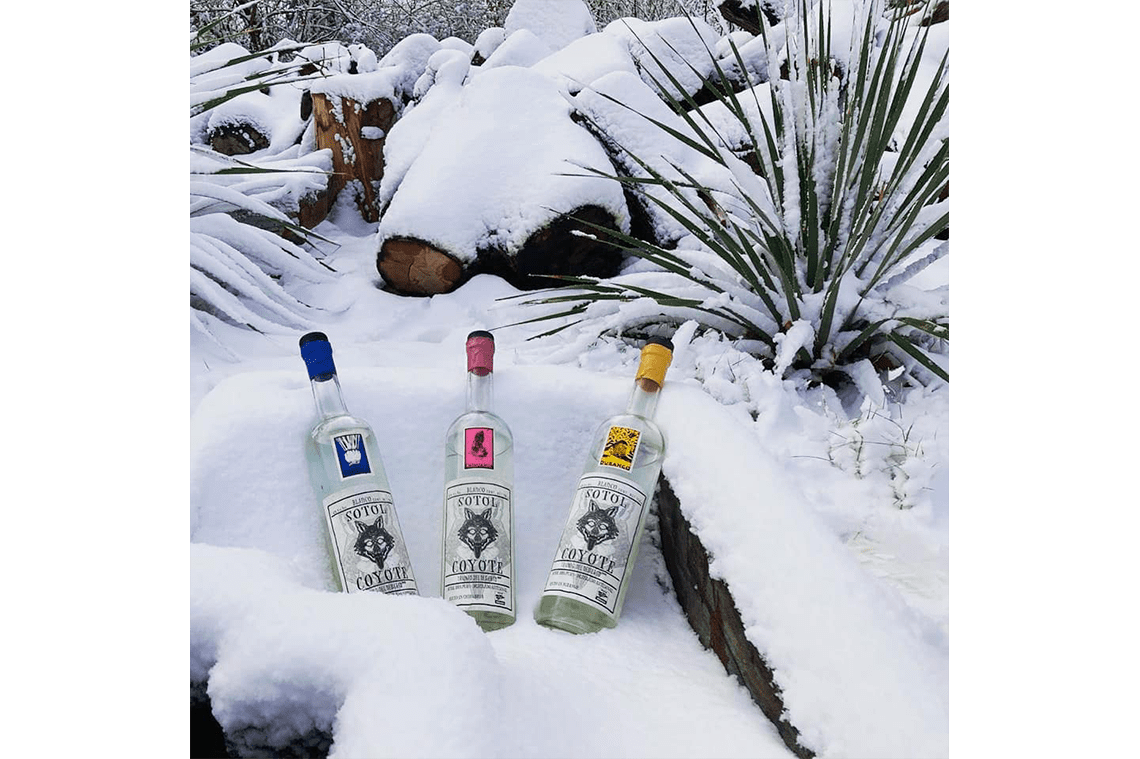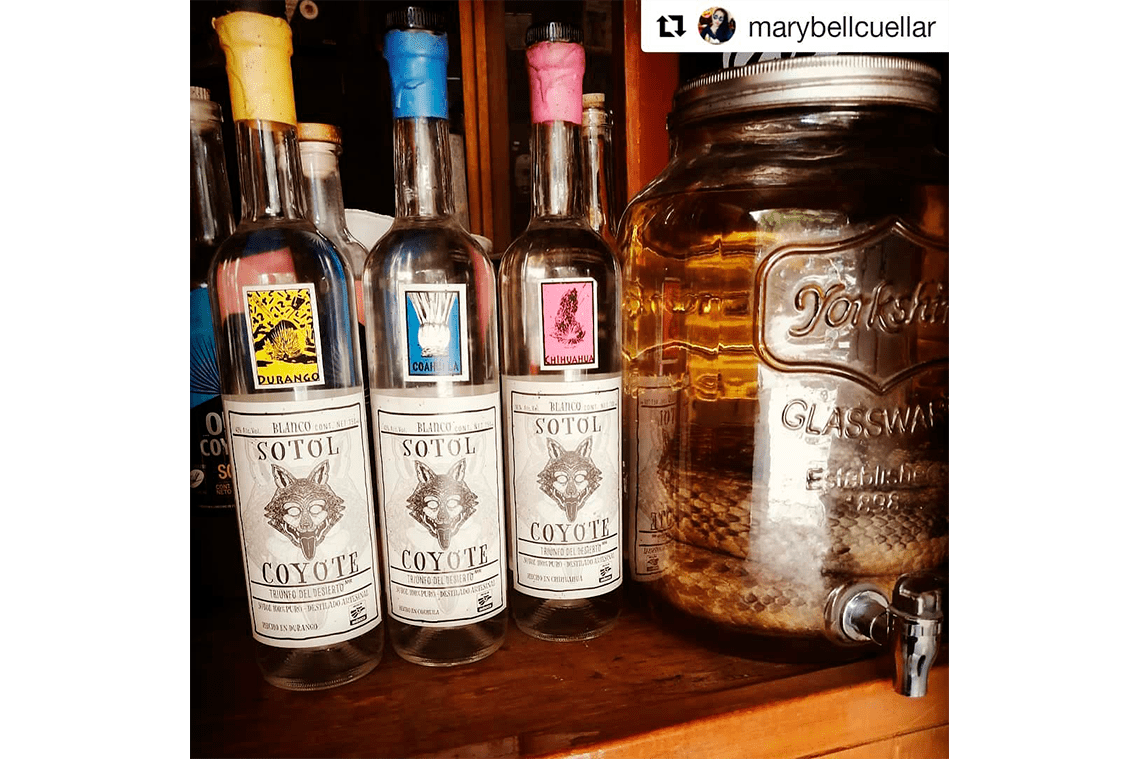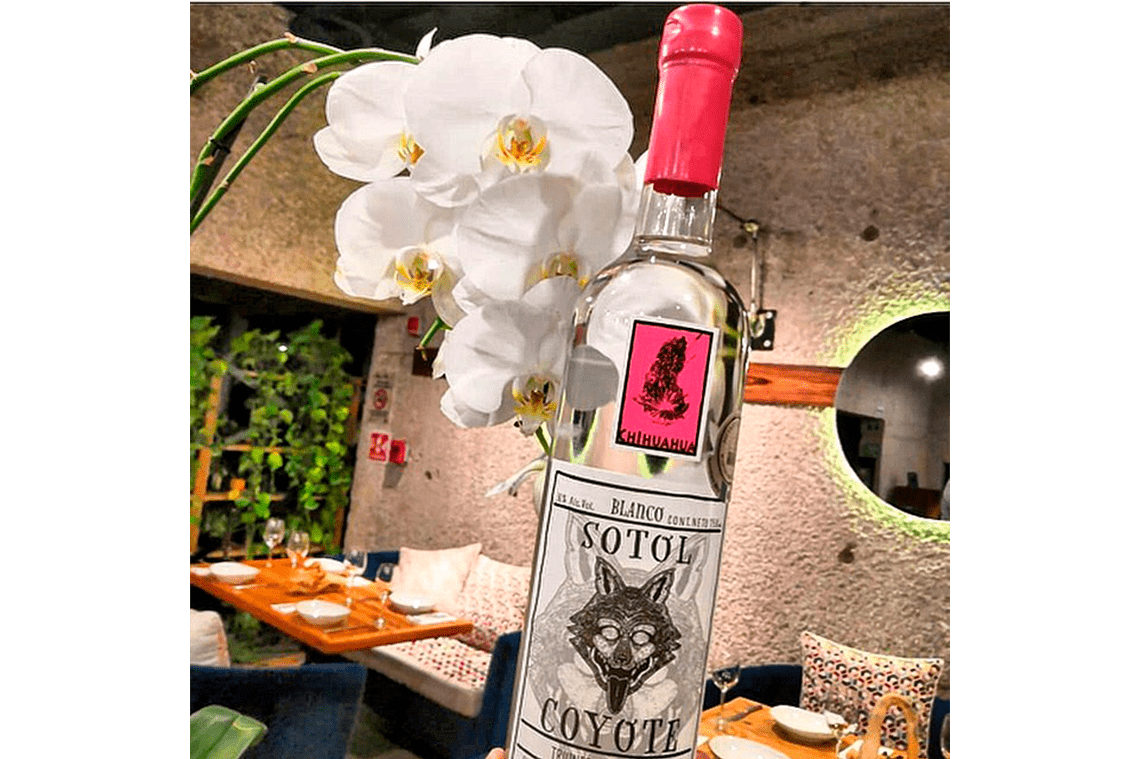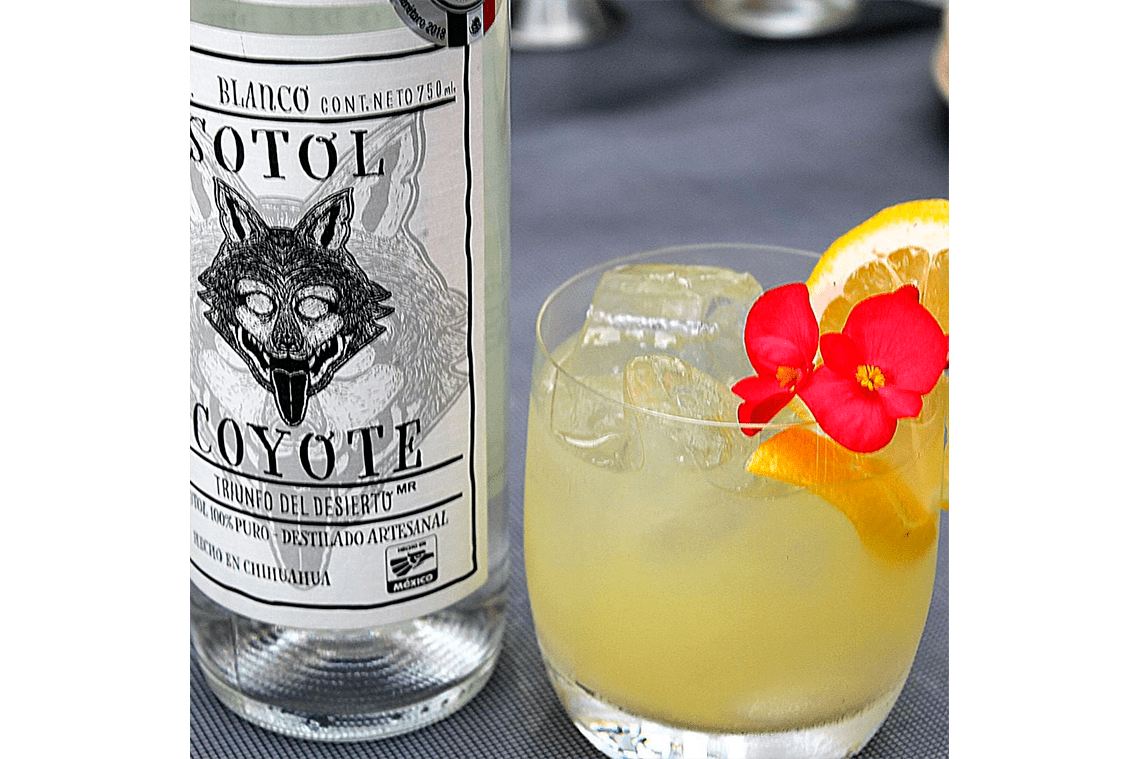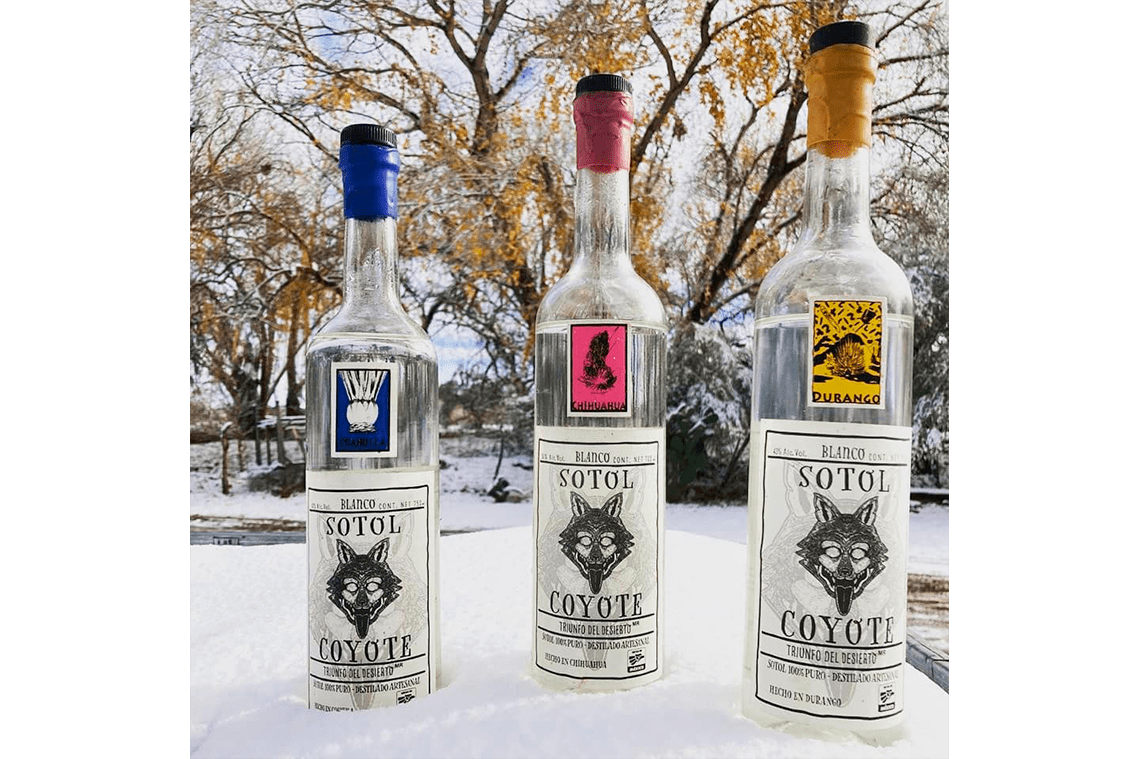SOTOL COYOTE
Triumph of the Desert
DESERT TRIUMPH

The story tells that there were three characters who survived the desert.
These characters are called: El Maestro Sotolero, the coyote and the sotol; all three
have coexisted and lived together in the same environment since the first memories of
them.
The noble sotol plant managed to adapt to extreme conditions of high temperatures and to
receive few amounts of water and even so, it allows the Master to have it available to
provide him with food, footwear and that spiritual drink called sotol, which managed to
calm his soul.
The Master Sotolero, inhabitant of the arid deserts, decided to continue with the
tradition inherited by his grandparents of producing sotol; out of tradition, out of
love or simply by way of supporting his family.
The coyote, an animal hated and loved by man, had to learn to make his cunning his best
survival weapon in the face of the excessive urbanism of man, to know when to go
hunting, when to hide, when to move in a herd and when alone.

We create experiences
that transform days
bad in incredible
Through the Chihuahuan desert you can see the three of them, the teacher jimando a sotol
under the strong 40-degree heat, while in the background a coyote that walks alone,
observes the man jimando and then continues walking.
Sotol Coyote is a tribute to these three characters; that they have never wavered before
what has been presented to them throughout time and history; Sotol Coyote was born to be
known, appreciated and remembered. We are a survival story.

CLAN COYOTE
Preserving Mexico's cultural and natural heritage Through a value chain value chain with artisanal Sotol producers.
who have inherited through generations the generations the leisure of creating with care and care, this traditional beverage. At the same time, we take on the task of making sustainable use of the natural resources used for the natural resources used for the elaboration of our beverage. To be a business model that inspires the ethical treatment of nature and the nature and those involved in the value chain. To captivate through the exquisite organic flavor of our Sotol.
At Sotol Coyote we believe that there are real possibilities to live possibilities to live in a better Mexico. better Mexico.
Therefore, our vision is to develop decent living conditions for all those involved in the value chain by value chain through the promotion of small and medium scale production and the execution of a sustainable, friendly small and medium scale production and the implementation of a sustainable, environmentally friendly environmentally friendly model of local development. We also believe that through our products we can make a significant products we can make a significant contribution, while remaining focused on being the sotol brand on being the best quality and most widely accepted artisanal sotol brand in Mexico and the world. and the world.
The pleasure of a good distillate depends on the raw raw material at the exact point of maturation. maturation. When the plant has matured sufficiently, the pineapple or heart is cut.
Once the leaves are trimmed, they are taken to the vinata by donkey, the pineapples are thrown into a conical stone oven, using mesquite wood. inside a conical stone oven, using ignited mesquite wood and volcanic stone. and volcanic stone, covered with fiber and earth to undergo a cooking process of 2 to 3 days. cooking process for 2 to 3 days, then the cooked heads are removed and crushed with an axe. then the cooked heads are removed and crushed with an axe to obtain a juice rich in sugars that will be transformed into transformed into alcohol by means of spontaneous fermentation carried out by a group of microorganisms by a group of microorganisms naturally present in the must while it rests for 3 to 7 days (3 to 7 days). 3 to 7 days (depending on climate and temperature) in oak wood vats using well water. using well water. Once fermentation is complete, a double distillation is carried out in an alembic still. double distillation in copper stills. It should be noted that the benefits of sotol are more noble than those of most of the distillates on the market, since after the double distillation in copper stills. after the double distillation in chemical studies reflects a percentage of 0.01% of dangerous alcohols. 0.01% of dangerous alcohols, which is a really significant amount, considering that the norm considering that the standard allows up to 0.05%, which is the value of most industrial distillates. industrial distillates.
SOTOL COYOTE TRIUMPH OF THE DESERT
The elaboration and commercialization of sotol coyote is based on respect and care for the environment and care for the environment as well as for each person involved in the process. Sotol Coyote is a social project that abandons the true essence of the wild, pure and natural. wild, pure and natural. We are a reflection of the earth, and although we were born with the Mexican product, we also seek to promote the art and culture of our country, as well as the culture of our country, as well as the respect and admiration for our origin. origin.
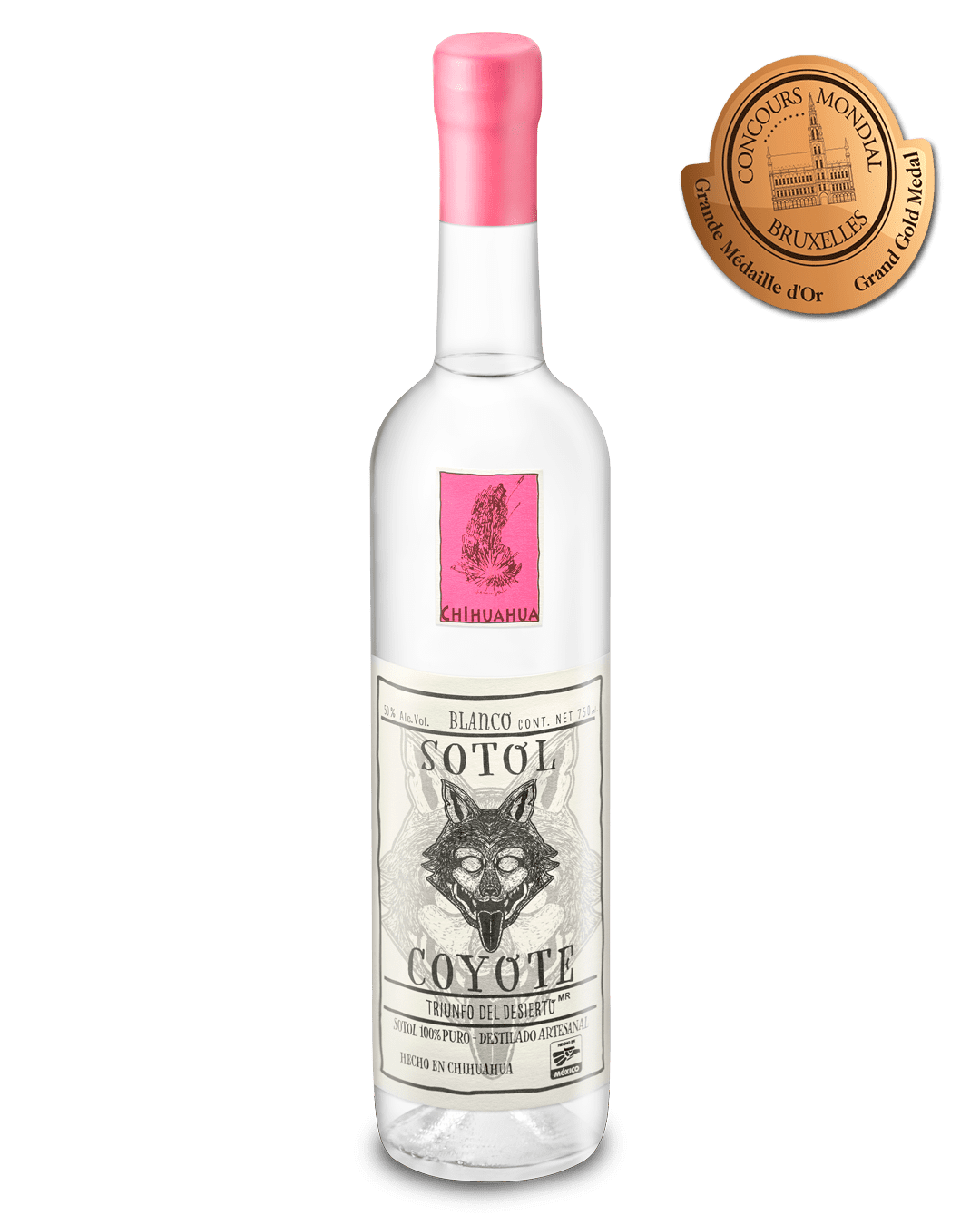
Gerardo Ruelas is the face behind the vinata Chihuahense. The high temperatures of the stone kiln and the character of the of character are evident at the first sip. 100% organic, Sotol Coyote Triunfo del Desierto Chihuahua is our interpretation of intensity. interpretation of intensity.
-
Plant: 100% pure Sotol
-
Variety: Dasylirion Leiophyllum
-
Appellation of origin: Aldama, Chihuahua, Mexico.
-
Conical kiln made of stone and mesquite wood. mesquite wood.
-
Manual grinding with axe
-
Fermentation in oak vats with well water
-
Double distillation in copper pot stills
-
Category: White
-
Alcoholic Percentage: 50% Alc. Vol.
Tasting
-
Appearance: Crystal clear, limpid, bright with silvery reflections. silver reflections, with very good consistency and consistency and viscosity.
-
Nose: Smoky and earthy notes stand out, followed by aromas of citrus fruits followed by aromas of citrus fruits such as lime and lemon lime and lemon, wild herbs and mineral notes. mineral notes.
-
Taste: The palate is warm, unctuous, silky, it has an intense attack, with its well-integrated alcohol with herbal notes herbal notes stand out, smoky, mineral notes with an aftertaste of floral floral honey aftertaste.
-
Pairing: buttered escamoles tacos with epazote, Oaxaca black mole. with epazote, black mole from Oaxaca.
-
GRAND GOLD MEDAL AT THE BRUSSELS COMPETITION 2020

From the hand of Master Sotolero Gerardo Ruelas, our version of Durango has its own characteristics characteristics that and mineral flavors. Milled with tahona, baked in a conical oven and fermented in vats of with well water, Coyote Durango is the the version version of the desert.
-
Plant: 100% pure Sotol
-
Variety: Dasylirion Texano
-
Denomination of origin: In the name of God, Durango, Mexico.
-
Conical stone and mesquite wood kiln mesquite wood
-
Manual grinding with axe
-
Fermentation in oak vats with water from well
-
Double distillation in copper stills copper
-
Category: White
-
Alcoholic percentage: 43% Alc. Vol.
-
Contents: 750ml
Tasting
-
Appearance: Crystal clear with silvery reflections, clean and bright.
-
Nose: Aromas of dried fruits and nuts fruits, pear, peaches, dried apricots and seeds dried apricots and seeds, nuts, hazelnuts, almonds with hazelnuts, almonds with slight notes smoked notes.
-
Taste: In the mouth it is pleasant on the palate, confirms what was perceived on the nose, generates a sweet sensation reminiscent of crystallized figs and of crystallized figs and nutmeg. nutmeg.
-
Pairing: Chiles en nogada, mole, mole almond mole, nut cream, goes very well with cheese boards cheese boards and cold meats.
-
SILVER MEDAL AT THE WINE & SPIRITS 2018
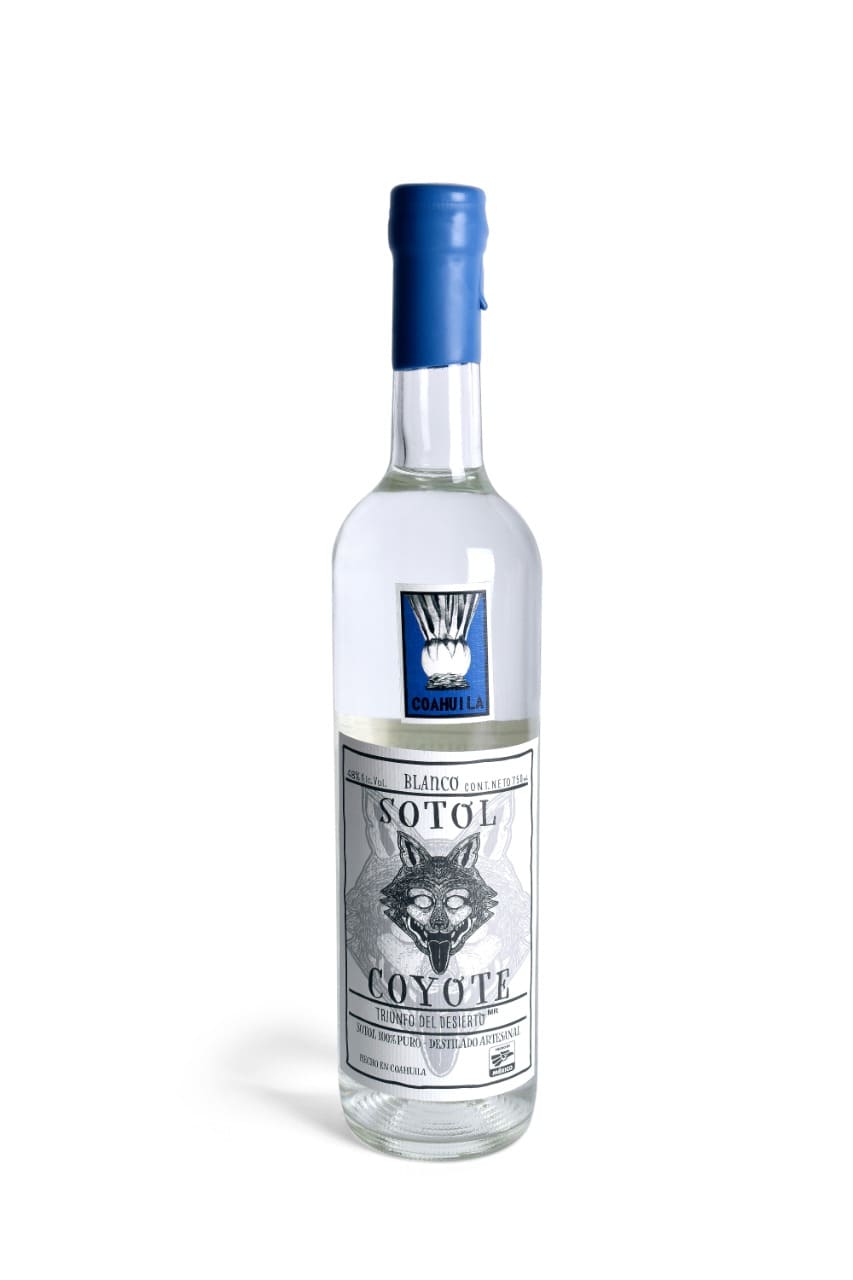
Under Gerardo Ruelas, our Coahuila ruelas, our Coahuila label, represents the state with the lowest the state with the lowest production of sotol, however its own characteristics give it a powerful attack with sweeter and fruitier attack with sweeter and fruitier flavors.
-
Plant: 100% pure Sotol
-
Variety: Dasylirion Cedrosano
-
Denomination of origin: Cuatro cienegas, coahuila, Mexico.
-
Conical kiln made of stone and mesquite wood mesquite wood
-
Manual grinding with axe
-
Fermentation in oak vats with well water
-
Double distillation in copper alembic stills
-
Two months in barrels and in contact with a cooked head of sotol head cooked
-
Rattlesnake snake
-
Category: White
-
Alcoholic percentage: 45% Alc. Vol.
Cata
-
View: Crystal clear with silvery reflections, clean and bright.
-
Nose: Fruity aromas of guava, tejocote and quince guava, tejocote and quince, notes of lime, orange and notes of lime, orange and lime and subtle herbal subtle herbal notes
-
Taste: In the mouth it has a powerful attack, silky with an aftertaste of quince paste and quince and fruit punch.
-
Pairing: Tacos al pastor, discada norteña , cold meats.

From the hand of Gerardo Ruelas, 4th generation of his family as sotol producers sotol producers, our Vivorá label, is our interpretation of the our interpretation of the tradition that has been shared shared from generation to generation as a medicinal remedy. medicinal remedy. Avocado with micro-doses of viper venom and resting in contact with pineapples. resting in contact with cooked sotol pineapples.
-
Plant: 100% pure Sotol
-
Variety: Dasylirion Leiophyllum
-
Appellation of origin: Aldama, Chihuahua, Mexico.
-
Conical kiln made of stone and mesquite wood mesquite wood
-
Manual grinding with axe
-
Fermentation in oak vats with well water
-
Double distillation in copper alembic stills
-
Avocado with micro-doses of snake venom and 3 months in barrel in contact with cooked sotol pineapples. cooked sotol pineapples.
-
Category: White
-
Alcoholic percentage: 45% Alc. Vol.
Tasting
-
View: Pale gold color with greenish reflections, clean and bright. greenish reflections, clean and bright.
-
Nose: It has a marked aromatic intensity marked, aromas of green tea stand out, lemon grass, prickly pear and papalo quelite, slightly smoky.
-
Taste: In the mouth its attack is fine and elegant, silky, spicy, with its alcohol very well integrated well-integrated alcohol and a slight and a slight spicy sensation on the tip of the tongue. tongue.
-
Pairing: Meatballs in tomato broth, maguey worms tacos, accompanied by accompanied by fresh guacamole guacamole and quelite papalo leaves, chapulines roasted chapulines with lime.
WORK
A LITTLE BIT OF HISTORY

It is an ancestral Mexican distillate and, being a millenary beverage, it has an
identity that is difficult to find in other products.
identity difficult to find in other products.
It is obtained from a desert shrub known by the experts as
"Dasylirion"). The main sotol regions of the country are in the arid desert of
Chihuahua
arid desert of Chihuahua, Coahuila and Durango.
One of the first places where there is a record of sotol production is in
ancient Paquimé, a pre-Hispanic city located in what is known today as
Paquimé, a pre-Hispanic city located in what is now known as Casas Grandes, in
the heart of Chihuahua.
Casas Grandes, in the heart of Chihuahua.
Within these ruins there are several subway ovens that date back to the year
700.
in them were massively cooked heads of sotol for the fermentation of this
distillate, which was
distilled; it is clear that due to its sweet effects, it was used for the
agricultural festivities of the
agricultural festivities of the population. Things have not changed so much
since then.
then.

Our history
accompanies us
on every step
Sotol is commonly related to mezcal and other spirits of the style. style spirits. Despite being similar historically, technologically and culturally, the major cultural issues, the big difference between sotol and the other distilled spirits is the botanical botanical family to which each one belongs. That is to say, sotol is not made from agave, but from sotol. agave, it is from sotol, a shrub of the Asparagaceae family that grows mainly in the desert. mainly in the desert.

"Ley Seca USA"

When alcohol was banned in the neighboring country, a mythical character emerged
from the
culture
American culture: Al Capone, famous alcohol trafficker.
The story goes that, every time the police found the barrels and bourbon from
Al
Capone,
he burned them. In 1919, alcohol was banned in the United States and there was
much
reproach
against
Elías Calles is said to have made a negotiation with Al Capone.
Capone:
"prohibit
distillates and in the process, put all your sotoleros of the border at my
disposal.
at my disposal
and let them produce my Whisky".
For 18 years the production of sotol was forbidden, during this time, the
sotoleros
sotoleros
dedicated themselves to making Whiskey and as with many of the traditions of our
country, the
country, the
generations who were supposed to learn from their ancestors how to distill sotol
were
sotol, were
ended.
Al Capone
famous trafficker
alcohol trafficker.
Things got even more complicated for this distillate when, in 1920, Plutarco
Elías
Calles almost extinguished sotol by banning national distillates. The
prohibition was
The ban was lifted in 1938, but people gave up on this and other distillates,
becoming something
very local.
The big capo's visit is more than a legend in Ciudad Juárez, Chihuahua where
Al
Capone went there to stock up on the widely accepted Juarez Whiskey, as well as
his
drink
Mexican spirit: Sotol.


